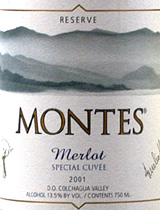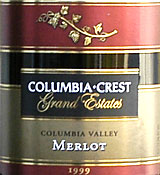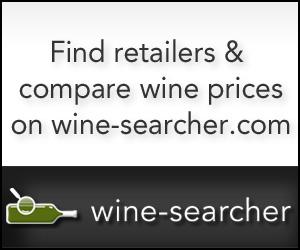|
Volatile or vinegar? In times past, wine left in an open bottle or cask would so quickly turn to vinegar that the word "vinegar" itself comes directly from the French "vin aigre," or "sour wine." To this day, many people assume that wines too old to drink turn to vinegar in the bottle. Actually, a more typical destination for wine as it goes over the hill with age is a dull, nutlike aroma more akin to cheap Sherry than salad dressing. In fact, vinegary wine isn't much of a problem any more, and we have the scientist Louis Pasteur to thank for that. Called into service by the French government in 1862 to figure out what was causing wine exports to turn sour before they got to market, Pasteur put samples under his microscope, found them alive with bacteria, and, eventually, invented the process that we now call "pasteurization" in his honor. Pasteurization - carefully bringing a food or beverage to a below-boiling temperature sufficient to kill off spoilage bacteria - is more commonly practiced with milk nowadays than wine. But the lesson that Pasteur taught wine makers is still with us: Take care to avoid exposing wine to contaminants and air during production, and you'll protect it against spoilage. If few modern wines reek of pure vinegar, "volatile acidity" - an aromatic characteristic in wine that results from the vinegar-producing bacterium called "acetobacter" - is still an important piece of the wine-tasting picture. Today, inspired by a rather "volatile" Chilean Merlot, let's take a quick look at this aspect of basic wine chemistry. Acetobacter is found everywhere from grapeskins to winery walls and floors and even oak barrels. The bacterium itself has no particular aroma or flavor, but in contact with oxygen in wine and other food products, it produces both acetic acid (vinegar) and ethyl acetate (another volatile component that causes aromas akin to furniture polish, nail-polish remover or airplane glue). Pasteur recommended high-temperature pasteurization to kill the acetobacter bacteria. This works, but unfortunately, heating alters the wine. Fortunately, there's an alternative, as the wine scientist Emile Peynaud points out: It's possible to foil acetobacter by making wine under scrupulously clean conditions and storing it away from air, filling barrels to the top and keeping them full and replacing any remaining air in the container with inert gases to drive out the oxygen. This simple advice has all but eliminated vinegar from modern wines. But some wines still show volatile acidity (which wine tasters often abbreviate as "VA"). It's imperceptible to most tasters in tiny traces, but a fatal flaw in excess, when the furniture polish and airplane-glue characteristics of ethyl acetate become dominant. In between, at the edge of perception, volatile acidity becomes another of those controversial issues that divide wine tasters into opposing camps. Some experts - including Peynaud - consider any trace of VA a serious flaw. But others argue that traces of it "lift" a wine, enhancing its natural fruit flavors with a soprano counterpoint of "high-toned" aromas. Great dessert wines, not excluding the top Sauternes, may benefit from this approach; and the late Max Shubert, the creator of Australia's great Penfolds Grange, reportedly deliberately induced volatile acidity in some vintages (by allowing air into some of the casks during aging) to enhance their fruit. The Montes Chilean Merlot tasted today is no Grange, but it offers a good example of a wine with a "lifted" volatile aroma. Not at all vinegary, it shows an elusive "dusty" scent that's reminiscent of fine old furniture at first ... and then, as your senses zero in, it's furniture polish, a high-toned scent that is to the taste buds as a high violin note is to the ears: edgy, even piercing, but not quite shrill or screechy. I'll confess: It's not my favorite wine characteristic. Put me in Peynaud's camp. But if you're interested in evaluating wine like the pros, you'll want to understand VA, whether you like it or not.
WINE TASTING 101: Both of today's wines, and several other Merlots, are featured in our Wine Tasting 101 project this month as we focus on "Exploring Merlot." For more information on this free, interactive wine-education project, visit  Montes 2001 "Special Cuvee" Colchagua Valley Reserve Merlot ($10.49)
Montes 2001 "Special Cuvee" Colchagua Valley Reserve Merlot ($10.49)
The characteristic cherry-and-vanilla scent of Merlot made in oak dominates the aroma of this very dark garnet wine from Chile, along with aromatic notes that offer a good illustration of volatile acidity in red wine: High-toned but not unpleasant, literally "lifting" the wine's fruit flavors. Ripe, tart fruit flavors are held in place by a firm acidic backbone, with simple fruit and snappy acidity in a medium-long finish. The volatility seems to increase a bit with time in the glass after dinner, taking on a more intrusive furniture-polish (or, if you prefer, "floral") quality; perhaps it's best with food. U.S. importer: T.G.I.C. Importers Inc., Woodland Hills, Calif. (April 4, 2003) FOOD MATCH: Good with any red meat or mild cheese; it was fine with a simply prepared pork chop braised with potatoes and onions in the French bonne maman style. VALUE: Appropriate value for the price. WHEN TO DRINK: Safe to hold for a couple of years, but I don't see it actually improving in the cellar.
WEB LINK: Here is the Montes Website:  Columbia Crest 1999 "Grand Estates" Columbia Valley Merlot ($10.99)
Columbia Crest 1999 "Grand Estates" Columbia Valley Merlot ($10.99)
This inky blackish-purple Washington State Merlot shows distinct chocolate-covered cherry aromas with forward, almost grapey fruit. Ripe and soft on the palate, so fruity that it comes across as almost sweet, it's a simple but approachable wine, easy to like, the kind of "crowd pleaser" that moves briskly in restaurant by-the-glass sales. (April 4, 2003) FOOD MATCH: Works well to wash down pork chops; will go easily with just about any red meat or poultry. VALUE: Appropriately priced. WHEN TO DRINK: Should hold up for a year or two on the wine rack, but don't expect it to improve with aging; best while its simple, forward fruit is fresh.
WEB LINK: You'll find the Columbia Crest Website at  Burgundy Wine Company:
Burgundy Wine Company:25% Off Great American Wine Sale The Burgundy Wine Company announces their 25% Off Great American Wine Sale. The top producers of Oregon Pinot Noir – Ken Wright, St. Innocent, Beaux Freres – and many, many others at steep discounts. For a more complete list, as well as their most recent value recommendations from Burgundy and the Rhone Valley, and to sign up for their free newsletter, click here or call (212) 691-9092 for more details.
Specialists in Burgundy, Rhone & Oregon Wines #1 in Customer Service: Zagat's New York City Marketplace "America's Best Kept Secret:" America's Elite 1000 New 2500 square foot location - 143 W. 26th St. Daily Wine Tastings 5-7 p.m. Corporate Tastings http://burgundywinecompany.com/gaws.htm?tswa040703 Sponsorship Opportunities
30 Second Wine Advisor sponsorships are limited to established wine-and-food-related businesses with a track record of customer service. For information about delivering your message to our 25,000 international readers, write Last Week's Wine Advisor Index The Wine Advisor's daily edition is usually distributed on Mondays, Wednesdays and Fridays (and, for those who subscribe, the FoodLetter on Thursdays). Here's the index to last week's columns:
• Uva di Troia (April 4, 2003)
• I hear a Symphony (April 2, 2003)
• Trans-Atlantic comparison (March 31, 2003)
• Complete 30 Second Wine Advisor archive:
• Last week's Wine Advisor Foodletter: Pissaladiere (April 3, 2003)
• Wine Advisor Foodletter archive: To subscribe or unsubscribe from The 30 Second Wine Advisor, change your E-mail address, or for any other administrative matters, please use the individualized hotlink found at the end of your E-mail edition. If this is not practical, contact me by E-mail at wine@wineloverspage.com, including the exact E-mail address that you used when you subscribed, so I can find your record. We do not use our E-mail list for any other purpose and will never give or sell your name or E-mail address to anyone. I welcome feedback, suggestions, and ideas for future columns. To contact me, please send E-mail to wine@wineloverspage.com All the wine-tasting reports posted here are consumer-oriented. In order to maintain objectivity and avoid conflicts of interest, I purchase all the wines I rate at my own expense in retail stores and accept no samples, gifts or other gratuities from the wine industry.
Monday, April 7, 2003 |




